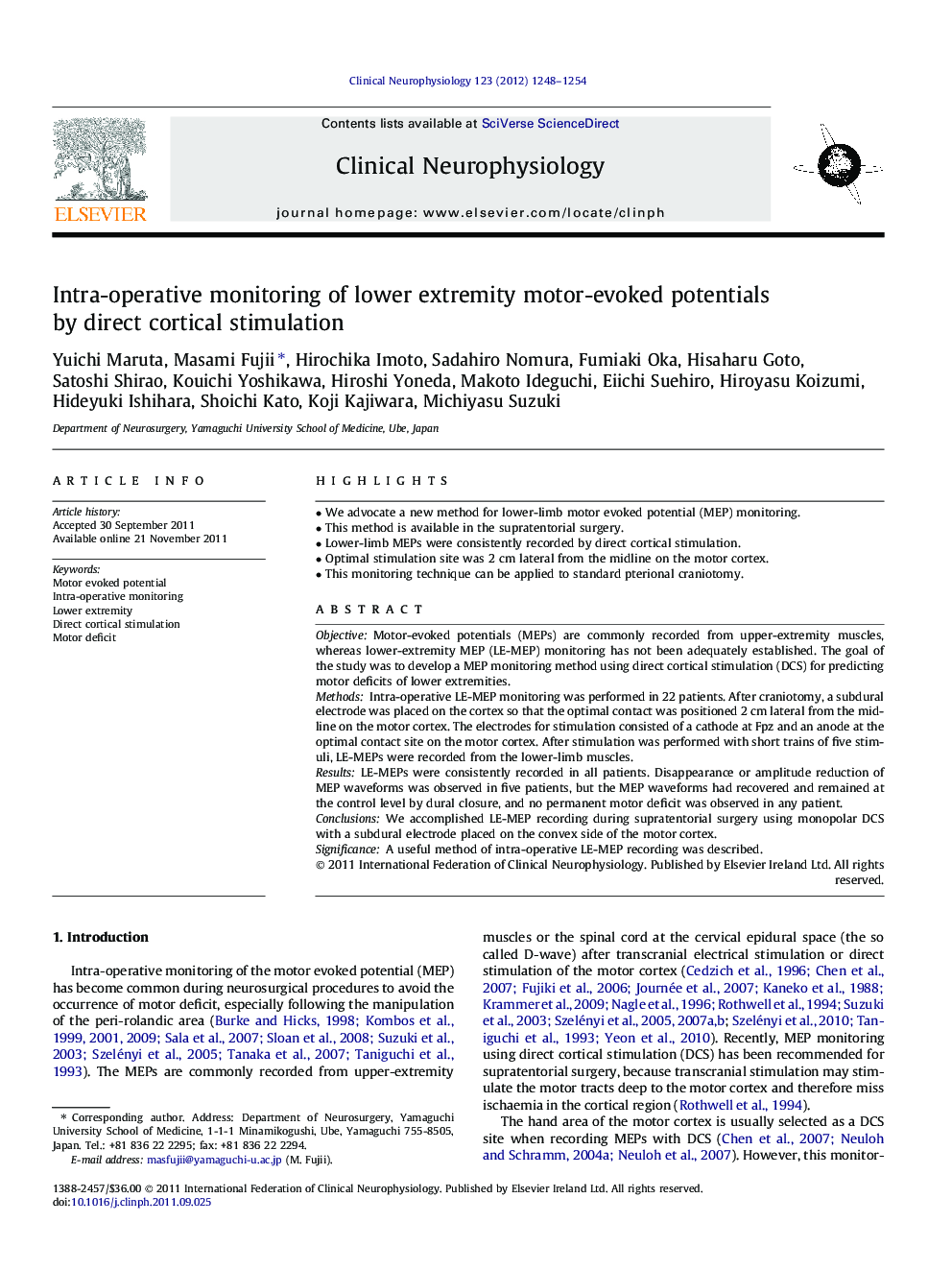| Article ID | Journal | Published Year | Pages | File Type |
|---|---|---|---|---|
| 3045026 | Clinical Neurophysiology | 2012 | 7 Pages |
ObjectiveMotor-evoked potentials (MEPs) are commonly recorded from upper-extremity muscles, whereas lower-extremity MEP (LE-MEP) monitoring has not been adequately established. The goal of the study was to develop a MEP monitoring method using direct cortical stimulation (DCS) for predicting motor deficits of lower extremities.MethodsIntra-operative LE-MEP monitoring was performed in 22 patients. After craniotomy, a subdural electrode was placed on the cortex so that the optimal contact was positioned 2 cm lateral from the midline on the motor cortex. The electrodes for stimulation consisted of a cathode at Fpz and an anode at the optimal contact site on the motor cortex. After stimulation was performed with short trains of five stimuli, LE-MEPs were recorded from the lower-limb muscles.ResultsLE-MEPs were consistently recorded in all patients. Disappearance or amplitude reduction of MEP waveforms was observed in five patients, but the MEP waveforms had recovered and remained at the control level by dural closure, and no permanent motor deficit was observed in any patient.ConclusionsWe accomplished LE-MEP recording during supratentorial surgery using monopolar DCS with a subdural electrode placed on the convex side of the motor cortex.SignificanceA useful method of intra-operative LE-MEP recording was described.
► We advocate a new method for lower-limb motor evoked potential (MEP) monitoring. ► This method is available in the supratentorial surgery. ► Lower-limb MEPs were consistently recorded by direct cortical stimulation. ► Optimal stimulation site was 2 cm lateral from the midline on the motor cortex. ► This monitoring technique can be applied to standard pterional craniotomy.
